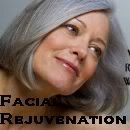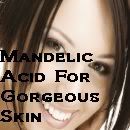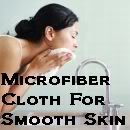
Glycolic acid is a natural ingredient derived from sugar cane known to reverse sun damage and help in anti-aging of the skin, though it is now often made synthetically. It falls into the set of ingredients called AHA's, or alpha hydroxy acids. Glycolic acid is probably the most common alpha hydroxy acid and has the reputation of being one of the safest forms of alpha hydroxy acid.
Used over time, glycolic acid will start working beneath the skin's surface to produce youthful skin.
Glycolic acid is a rapid exfoliant. On the surface of the skin, it dissolves the fatty molecules that keep the dead, dry skin cells on the surface of the skin. When it dissolves these molecules, the dead skin cells are washed away, leaving only the new, radiant skin behind. Your skin will feel smooth and soft, and because the dead skin cells have been removed, your other products, like moisturizers, will better penetrate the skin, making them more effective.
Studies have shown that use of glycolic acids result in collagen growth. Increased collagen production and restructuring of the dermis from using glycolic acid can lead to an approximate 25 percent increase in skin thickness. This increased skin thickness helps soften fine lines and wrinkles.
Glycolic acid skin care is also excellent for acne-prone skin. Because of its small molecular structure, it is well able to battle acne. Just as the glycolic acid dissolves the dead skin cells, glycolic acid will also work to destroy Propionibacterium, which is the bacterium that causes whiteheads and other acne. People who experience mild to moderate acne will benefit from using glycolic acid products on a semi-regular basis. Those who have moderate to severe acne may find that glycolic peels by a skin care professional, along with regular home maintenance, can control their acne for the long term.
Glycolic acid will:
Rejuvenate dull skin
Lessen fine lines and wrinkles
Clean and flush pores
Increase collagen and elastin
Increase collagen and elastin
Diminish scarring
Even skin tone
Acts as an antioxiantMoisturize skin
Give a photoprotective effect
Studies on Glycolic Acid
When UVB-burned skin was treated with glycolic acid daily for 7 days, a 16% reduction in irritation was observed compared to nontreated skin, implying that skin healed sooner when treated with glycolic acid.
When a comparison of nontreated skin was made to skin treated with glycolic acid for 3 weeks prior to UVB exposure, a sun protection factor (SPF) of 2.4 was achieved. When a comparison of skin treated for 3 weeks was made to skin treated for 3 weeks and chemically peeled the data implied that the chemical peel reduced the SPF value of skin treated with glycolic by approximately 50%, however, an SPF trend of 1.7 was still obtained when compared with untreated skin.
The studies demonstrated that topical glycolic acid provides a photoprotective effect to pretreated skin yielding an SPF of approximately 2.4. In addition, when glycolic acid is applied to irradiated skin, it accelerates resolution of erythema. The data obtained from both studies support the hypothesis that glycolic acids acts as an antioxidant. [study]
Data show that a combination of RAL 0.1% and glycolic acid 6% may be used in association with other topical anti-acne treatments (benzoyl peroxide and topical antibiotics) with an excellent tolerance. [study]
Epidermal and dermal hyaluronic acid and collagen gene expression were all increased in glycolic acid-treated skin as compared to vehicle-treated controls. Therefore, data suggest that epidermal and dermal remodeling of the extracellular matrix results from glycolic acid treatment. Longer treatment intervals may result in collagen deposition as suggested by the measured increase in mRNA. [study]
Collagen I and procollagen I were increased after treatment with glycolic, lactic in the upper dermis. Data suggest that longer treatment intervals with glycolic and lactic acid can cause improvements in both the epidermal and dermal components and support the usefulness of AHA for rejuvenating photo-damaged skin. [study]
Collagen I and procollagen I were increased after treatment with glycolic, lactic in the upper dermis. Data suggest that longer treatment intervals with glycolic and lactic acid can cause improvements in both the epidermal and dermal components and support the usefulness of AHA for rejuvenating photo-damaged skin. [study]
How to Use Glycolic Acid
Glycolic Acid comes in many different products: facial cleansers, serums, moisturizers, eye creams and face peels.
In most over-the-counter products, the concentration of glycolic acid is kept fairly low (usually somewhere between 3 and 10 percent), while in chemical peels performed in doctor’s offices, the concentration can be much higher, usually about 50%.
The glycolic acid must be 8-12% to be minimally effective during a period of six months.
An added benefit of glycolic acid is that it will destroy free radicals in your skin, protecting you from skin cancer with antioxidants and a mild SPF of 2.4 (see study above). Even with that protection I would always recommend you wear sunscreen when using glycolic acid- just to be on the safe side.
Where to Find Glycolic Acid
My favorite daily glycolic acid products are:
These are all relatively mild, if you want something stronger than you might want to try this.
Thanks for reading! What do you think?
You Might Also Like-



Filed under Skincare
Please leave a comment below!
______________________________________________________

Tidak ada komentar:
Posting Komentar